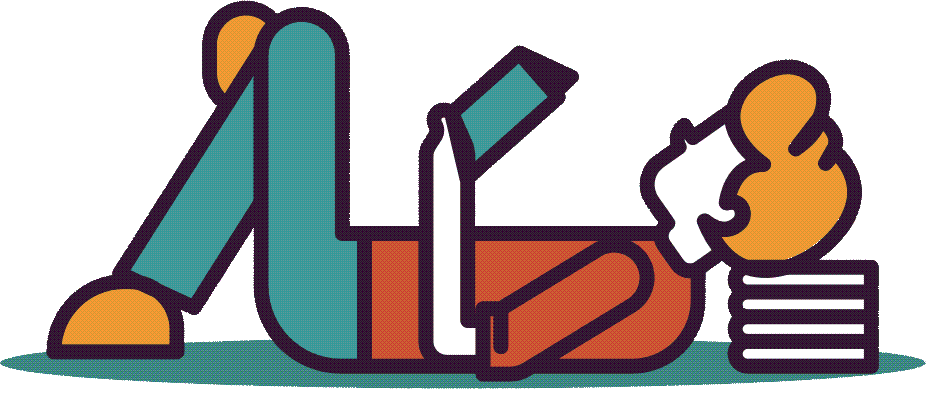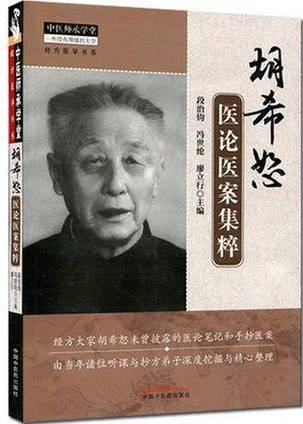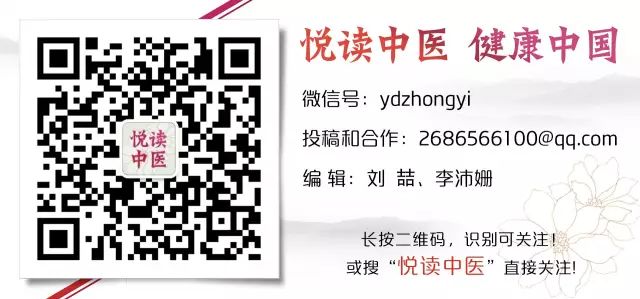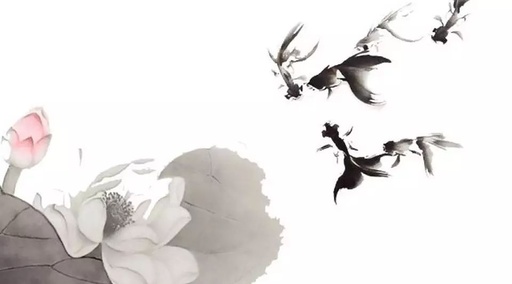Editor’s Note
Blood stasis syndrome is a common cause of various clinical diseases, leading to the development of many herbal formulas with stasis-resolving effects. Today, I would like to share an article by Mr. Hu Xishu discussing the principles of using herbs for blood stasis syndrome, which offers unique insights into the application of stasis-resolving formulas. Let’s take a look!
In the stasis-resolving formulas, the herbs that act to resolve stasis are not limited to Tao Ren (Peach Kernel) and Mu Dan Pi (Moutan Root); Shui Zhi (Leech) and Feng Chong (Horsefly Larva) are also stasis-resolving herbs. Dang Gui (Angelica Sinensis), Chuan Xiong (Ligusticum Chuanxiong), and Sheng Di Huang (Rehmannia Root) are all blood-tonifying herbs that also resolve stasis.
Take for example the formula Dang Gui Shao Yao San (Angelica and Peony Powder), which is indicated for “various abdominal pains in women; Dang Gui Shao Yao San is the main treatment.” Why is it specified for women? Because women are more prone to blood stasis. These blood-tonifying herbs we often mention, besides their strengthening effects, primarily resolve stasis. The Shen Nong Ben Cao Jing records that Sheng Di Huang is described as “resolving blood stasis,” and what is blood stasis? It is stasis of blood, thus it is a stasis-resolving herb with strengthening effects. Moreover, herbs have properties of cold and heat; Sheng Di Huang not only strengthens and resolves stasis but also has a cold nature that clears heat. It is often said that it resolves heat in the blood, which is correct, but its primary function is still to resolve stasis.
In clinical practice, when encountering patients with blood stasis, if there is no deficiency, do not use strengthening herbs. For chronic blood stasis, use herbs like Shui Zhi and Feng Chong. For general blood stasis, use herbs like Tao Ren and Mu Dan Pi, but it also depends on the patient’s symptoms. If the patient is deficient and has blood stasis syndrome, using aggressive methods is not appropriate; instead, use strengthening stasis-resolving herbs. For heat conditions, use Sheng Di Huang and Mu Dan Pi; for cold conditions, use Dang Gui and Chuan Xiong.

In my formulation examples, consider the Bai Ye Tang (Cypress Leaf Decoction) from the Jin Gui Yao Lue for treating hematemesis, where Sun Simiao added Ejiao (Donkey-hide Gelatin), which is quite reasonable. Why did he not add Sheng Di Huang? The herbs Bai Ye, Gan Jiang (Dried Ginger), and Ai Ye (Mugwort) are all warming herbs. Although the condition may not be a true yin deficiency, there is coldness present, so it is appropriate to enhance the hemostatic effect with the warming herb Ejiao, and Sheng Di Huang should not be added.
Next, consider the Xiong Gui Jiao Ai Tang (Chuan Xiong and Dang Gui Decoction), which includes Chuan Xiong, Dang Gui, Bai Shao (White Peony), and Di Huang, which is the later Si Wu Tang (Four Substance Decoction), plus Ejiao, Gan Cao (Licorice), and Ai Ye. We all know that Si Wu Tang is generally said to tonify blood, but it is not entirely so; it also resolves stasis, although it is primarily a strengthening stasis-resolving herb suitable for deficiency conditions, not for excess conditions. These herbs share the commonality of resolving blood stasis, but they also have their differences. For instance, Sheng Di Huang is sweet and cold, and has a strong cold nature; while Bai Shao is described in the Shen Nong Ben Cao Jing as bitter and neutral, actually it is slightly cold. They are both strong, cold, stasis-resolving herbs, beneficial for deficiency heat conditions, but not for deficiency cold conditions. The Shen Nong Ben Cao Jing states that Bai Shao treats blood stasis, where stasis refers to pain, and Bai Shao treats pain caused by obstruction of blood flow, and it also alleviates spasms, thus treating cramps and abdominal pain. Di Huang, with a colder nature than Bai Shao, also alleviates restlessness and has hemostatic effects, which is different from Bai Shao.
Dang Gui and Chuan Xiong are both warming, strengthening, stasis-resolving herbs, beneficial for deficiency cold conditions but not for deficiency heat conditions. However, Dang Gui and Chuan Xiong have some differences: Dang Gui is stronger for pain relief than Chuan Xiong; Chuan Xiong is superior in resolving stasis compared to Dang Gui.
Chuan Xiong, Dang Gui, Di Huang, and Bai Shao together harmonize cold and heat, making them suitable for conditions that are neither cold nor hot.
Shui Zhi and Feng Chong have similar effects, both resolving stasis while also having a decongestant effect, which means they can resolve stagnation and chronic blood stasis using Shui Zhi and Feng Chong. Herbs like Gan Qi (Dried Lacquer) and Feng Chong also serve this purpose, and their stasis-resolving effects are stronger than those of Tao Ren and Mu Dan Pi.
Feng Chong is a cold herb, similar to Shui Zhi and Feng Chong, but clinically it has a special effect of relieving pain and treating symptoms of fullness. It primarily treats chronic blood stasis, which is more stubborn than the blood stasis treated by Tao Ren and Mu Dan Pi. Therefore, for such blood stasis syndrome, using only Tao Ren is insufficient; Feng Chong must be used. In the Jin Gui Yao Lue under the section on Yao Shi (Stone Disease), although the bladder is urgent and the lower abdomen is full, indicating a water-heat stasis causing jaundice, the black color of the stool indicates the presence of blood stasis. However, the patient does not appear manic, so aggressive stasis-resolving herbs like Shui Zhi and Feng Chong are not used, but instead Niao Shi (Niter) and Fan Shi (Alum) are used. Fan Shi is commonly used in gynecology as an adjunct herb; although it also resolves dampness and heat, it has a mild stasis-resolving effect, but its power to resolve stasis is not strong. This is also recorded in the Shen Nong Ben Cao Jing.
In the Jin Gui Yao Lue under the section on Malaria, look at the composition of the Bie Jia Jian Wan (Soft-shelled Turtle Shell Pill), which primarily uses the Chai Hu (Bupleurum) formula. Based on the saying “the pulse of malaria is wiry,” it uses Chai Hu, Huang Qin (Scutellaria), Ren Shen (Ginseng), Ban Xia (Pinellia), and Gan Jiang. The dates and licorice are removed, and fresh ginger is replaced with dried ginger. Why are the dates and licorice removed? Because licorice has a harmonizing effect, especially when using aggressive methods, licorice is not used. The ancients believed that zheng jia (abdominal masses) are primarily two issues: one is blood stasis, so this formula must resolve stasis; the other is phlegm and fluid. The ancients viewed it this way. This formula, primarily using the Chai Hu formula, treats malaria. Additionally, it includes herbs that move qi, resolve stasis, and drain water, such as Tao Ren and Feng Chong, especially using Bie Jia to attack and resolve stasis. There are also qi-moving herbs like Hou Po (Magnolia Bark). There are also detoxifying herbs, like Feng Fang (Beehive), which uses poison to attack poison, also related to treating malaria. I have used this formula to treat hepatitis with splenomegaly, and it indeed has an effect. Because this splenomegaly cannot be expected to heal quickly, it is due to chronic blood stasis, and aggressive treatment is not appropriate; using this pill is better. Nowadays, the common Da Huang Feng Chong Wan (Rhubarb and Feng Chong Pill) is also quite effective. It is the same for treating chronic hepatitis; if there is blood stasis in the patient, if liver function is poor, Dan Shen (Salvia) and Yin Chen (Virgate Wormwood) can be added. However, the dosage of Dan Shen should be larger, as the medical saying states that Dan Shen can replace Si Wu Tang, so Dan Shen is also a stasis-resolving and blood-activating herb. In some cases of hepatitis, if liver function is severely damaged, using stasis-resolving and blood-activating herbs combined with gallbladder-promoting herbs can be effective. If there is severe pain in the hypochondrium, Wang Bu Liu Xing (Vaccaria) can be added. Originally a surgical herb, it promotes blood circulation and alleviates pain, so it can be very effective for liver area pain, but it is also beneficial for deficiency cold conditions, not for deficiency heat conditions.
Zhong Jing categorized blood stasis syndrome throughout the chapters of the Shang Han Lun, such as in the Tao Ren Cheng Qi Tang (Peach Kernel Decoction), Di Dang Tang (Di Dang Decoction), Di Dang Wan (Di Dang Pill), Gui Zhi Fu Ling Wan (Cinnamon Twig and Poria Pill), Da Huang Mu Dan Pi Tang (Rhubarb and Moutan Decoction), Dang Gui Shao Yao San, and Wen Jing Tang (Warm the Menses Decoction). To study Zhong Jing’s principles for treating blood stasis syndrome, one must summarize well. Analyze which are the warming, strengthening, stasis-resolving herbs for tonifying blood, and which are the cooling, strengthening, stasis-resolving herbs, categorizing them accordingly. You can also find some later family formulas; you should take the initiative to concentrate on studying stasis-resolving herbs, and I guarantee it will be better than Wang Qingren’s research on blood syndromes.

Recommended Reading

Collection of Medical Theories and Cases by Hu Xishu
The Collection of Medical Theories and Cases by Hu Xishu is another important reference for studying and researching Hu Xishu’s academic thoughts. The book includes new literature such as Mr. Hu Xishu’s original paper “Overview of the Application of Chai Hu Formula,” recorded lectures on “Treatment of Common Diseases” by Mr. Hu Xishu, and seventy-eight medical cases by Mr. Hu Xishu. To facilitate readers’ learning, five thematic compilations have been extracted from Mr. Hu Xishu’s teaching recordings, along with a wealth of excerpts from Mr. Hu Xishu’s treatment experiences. This not only benefits scholars in understanding Zhang Zhongjing and mastering the methods and spiritual essence of Zhongjing’s diagnostic and treatment system but also provides direct references and inspirations for clinical practice.
Copyright Statement
This article is excerpted from Collection of Medical Theories and Cases by Hu Xishu (published by China Traditional Chinese Medicine Press, edited by Duan Zhijun, Feng Shilun, and Liao Lixing), with all rights reserved by the original author. Published by Yue Du Zhong Yi (WeChat ID: ydzhongyi), cover image sourced from the internet. Unauthorized reproduction is prohibited!

Click below “Read the Original” to purchase with one click.

